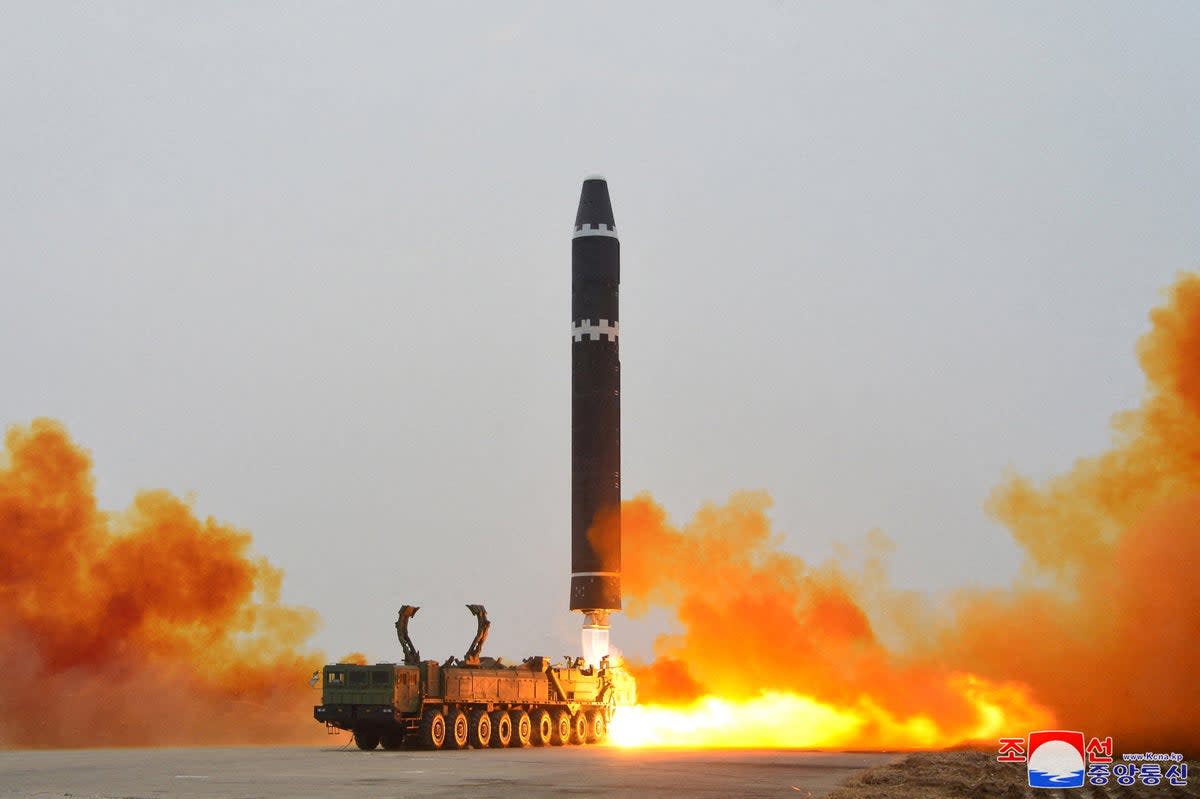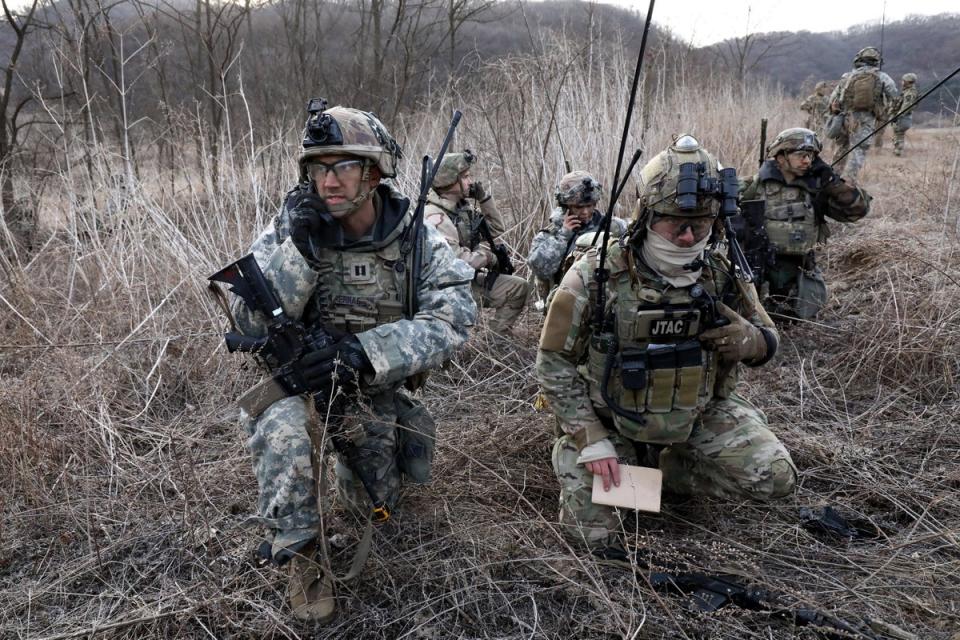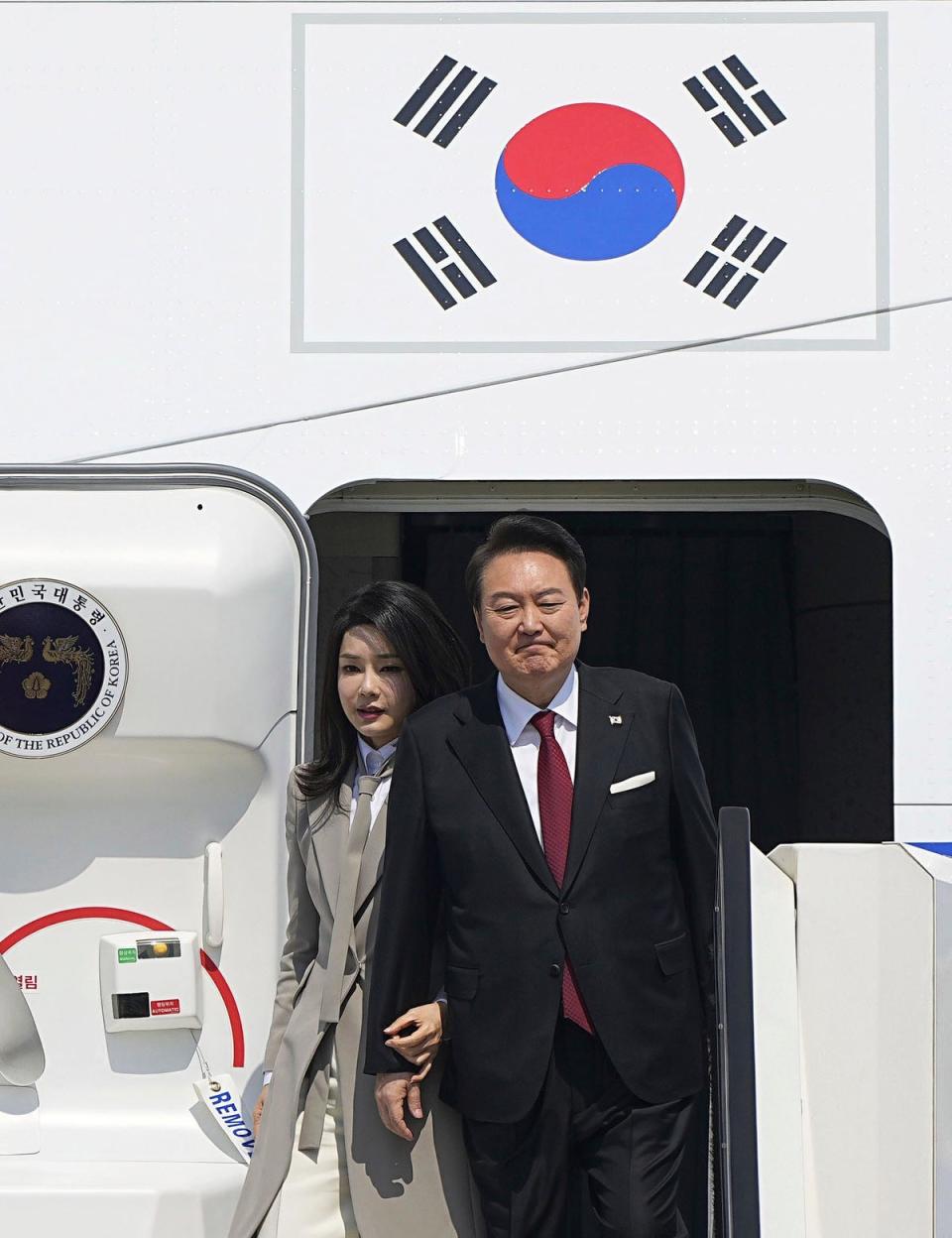North Korea fires ICBM hours before South Korea-Japan summit to counter nuclear threats

North Korea fired an intercontinental ballistic missile (ICBM) hours before South Korea’s president landed in Japan for a summit about nuclear threats.
The missile was launched from Pyongyang’s Sunan area at 7.10am on Thursday and it fell in the waters between the Korean Peninsula and Japan, said South Korean and Japanese assessments.
The suspected ICBM flew about 1,000km at a maximum altitude of 6000km after taking a 70-minute-long flight, they said.
This was North Korea’s third round of missile tests in the span of a week after firing two strategic cruise missiles from a submarine on Sunday and two short-range ballistic missiles on Tuesday.
The increasing number of weapon tests have widely been expected as South Korea and the US military began their massive Freedom Shield exercise on Monday that is set to run for 11 days.
In a statement, US National Security Council spokesperson Adrienne Watson said the test “needlessly raises tensions and risks destabilizing the security situation in the region”.
The missile launch happened just hours before South Korean president Yoon Suk-yeol landed in Japan.
The conservative president is visiting his neighbouring country for a bilateral summit his office praised as “an important milestone” in relations for the two Western allies that have not always seen eye to eye with each other.

The two-day visit is the first made to Japan by a South Korean president in 12 years to discuss measures to conter the threat of North Korea’s nuclear weapons programme and bilateral relations in an attempt to put behind years of animosity.
The two countries have a long history of acrimony which goes back to Japan’s 1910-45 colonial rule in the Korean Peninsula.
“Yoon’s Tokyo trip faced domestic opposition for allegedly rushing historical reconciliation in the interest of improving relations with Japan,” said Leif-Eric Easley, a professor at Ewha University in Seoul.

“North Korea’s ICBM test on the day of the Yoon-Kishida summit may have been intended to aggravate those politics but instead makes patently clear the need for deepening security cooperation among US allies.”
The North’s leader Kim Jong-un held a high-level meeting ahead of the drills and called his military to be ready to repel what he called “frantic war preparations moves (sic)” by his country’s rivals.
The trajectory of the suspected ICBM was similar to the one held on 18 Februrary when a Hwasong-15 was launched. North Korea said that test was meant to further bolster its “fatal” nuclear attack capacity against its rivals.
The Hwasong-15 is one of the North’s three ICBMs, all of which use liquid propellants that require pre-launch injections.
Mr Kim has vowed to build solid-propellant missiles that are more mobile and harder to detect before their launches as fuel for the missiles gets filled much in advance before the launch.

